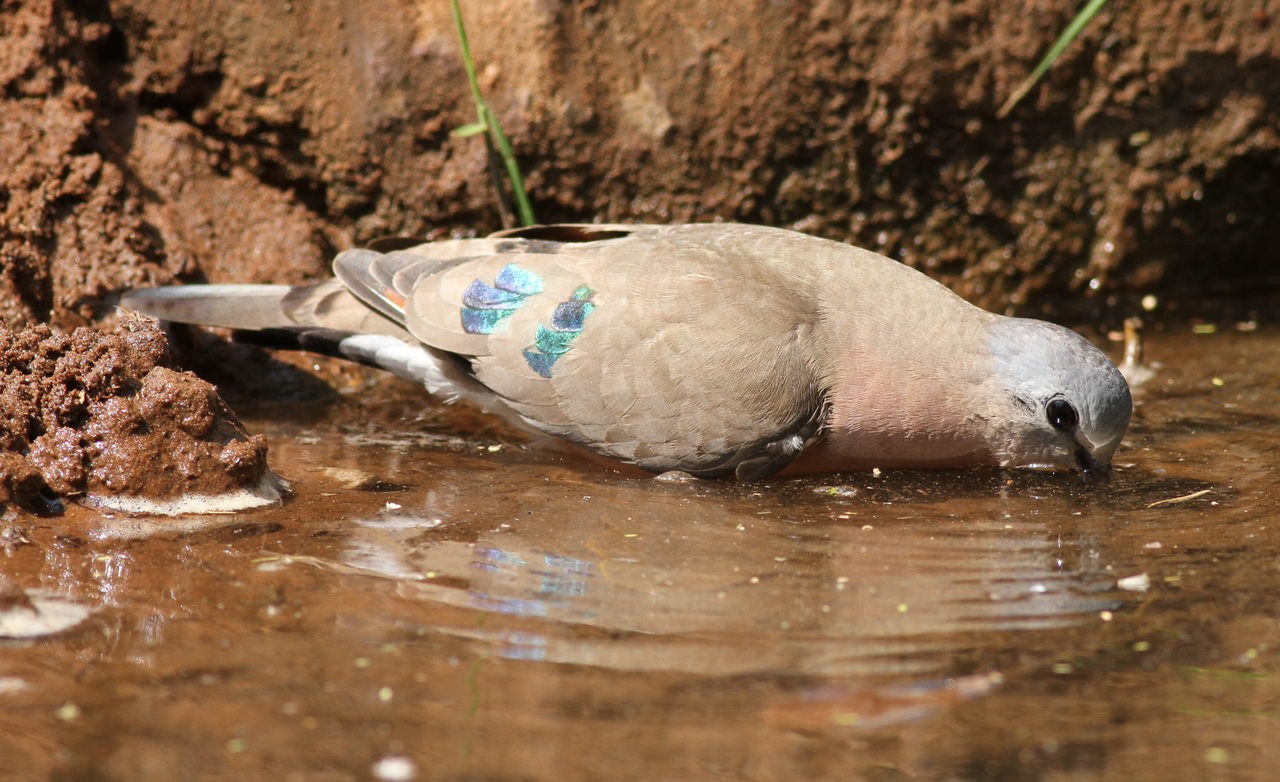Emerald-spotted Wood Dove
A species of Wood-doves Scientific name : Turtur chalcospilos Genus : Wood-doves
Emerald-spotted Wood Dove, A species of Wood-doves
Botanical name: Turtur chalcospilos
Genus: Wood-doves
Content
Description General Info
Description
Emerald-spotted wood dove is a small plump pigeon, typically 20 cm in length. Its back, hindneck, wings and tail are pale grey brown, and the folded wings have green metallic patches. There are blackish bands on the lower back and tail. The forehead, crown and nape are bluish grey, fading to pinkish grey on the throat. The underparts are mauve-pink, becoming whiter on the belly. The bill of this dove is blackish with a red base. The sexes are similar, but the female may be slightly duller than the male. The immature has duller green spots and buff fringes to the feathers. When flying, black-billed wood dove is told from this species by its bright chestnut underwings. The call is in three parts: two soft long coos, followed by a series of slow descending coos lasting 10 seconds, and concluding with 4 seconds of rapid coos, which decrease in volume. This species shows some geographical variation in plumage, but differences are clinal, and emerald-spotted wood dove is now considered to be monotypic. 
Size
20 cm
Nest Placement
Tree
Habitat
The habitat of emerald-spotted Wood Dove consists of dry and moist environments, favoring savanna woodlands, deciduous thicket regions, and riparian forests. They are suited to places ranging from open cultivated areas to dense woodlands with a preference for proximity to water, although not exclusively. This species adapts to coexist with certain other doves, occupying slightly wetter areas when in shared territories. Broadly, they inhabit regions with a mix of trees and open spaces across sub-Saharan Africa.
Dite type
Granivorous
General Info
Feeding Habits
Bird food type
Behavior
The emerald-spotted wood dove builds a flimsy stick nest in a tree or shrub, and lays two cream-coloured eggs. Both sexes incubate for 13–17 days to hatching, and feed the squabs for 13–17 days to fledging. Many young birds are taken by mongooses and shrikes. The emerald-spotted wood dove is not gregarious, but flocks may form at waterholes. This species usually forages on the ground for grass and other small seeds. 
Species Status
Not globally threatened.
Scientific Classification
Phylum
Chordates Class
Birds Order
Pigeons and doves Family
Dove Genus
Wood-doves Species
Emerald-spotted Wood Dove 